Messari: Detailed Analysis of Avalanche's Q2 Operational Data and Ecological Progress
Written by: James Trautman, Ashu Pareek, Messari Researchers
Compiled by: angelilu, ForesightNews
Key Takeaways:
- The macroeconomic environment did not hinder Avalanche's development or health throughout the second quarter, and the strategy to expand the network remains effective.
- Due to macro forces and activities redirecting from the Avalanche C Chain to subnets, the network's usage saw a sharp decline.
- Avalanche's TVL in USD terms decreased by approximately 75% quarter-over-quarter in the second quarter, but the amount of AVAX locked in DeFi increased.
- The ongoing development of subnets and the launch of Core will play a crucial role in interoperability between subnets and further expansion of the network.
Avalanche Q2 Narrative
Improving user experience was a top priority entering the second quarter. To this end, Ava Labs launched Core; a free, non-custodial wallet explicitly created for applications on Avalanche, with native support for subnets. Additionally, Ava Labs successfully enabled native Bitcoin support on the Avalanche Bridge, allowing BTC holders to securely transfer their BTC to Avalanche. Ultimately, while macro forces affected Avalanche's valuation and network activity, the strategy to continue expanding the network proved effective throughout the second quarter.
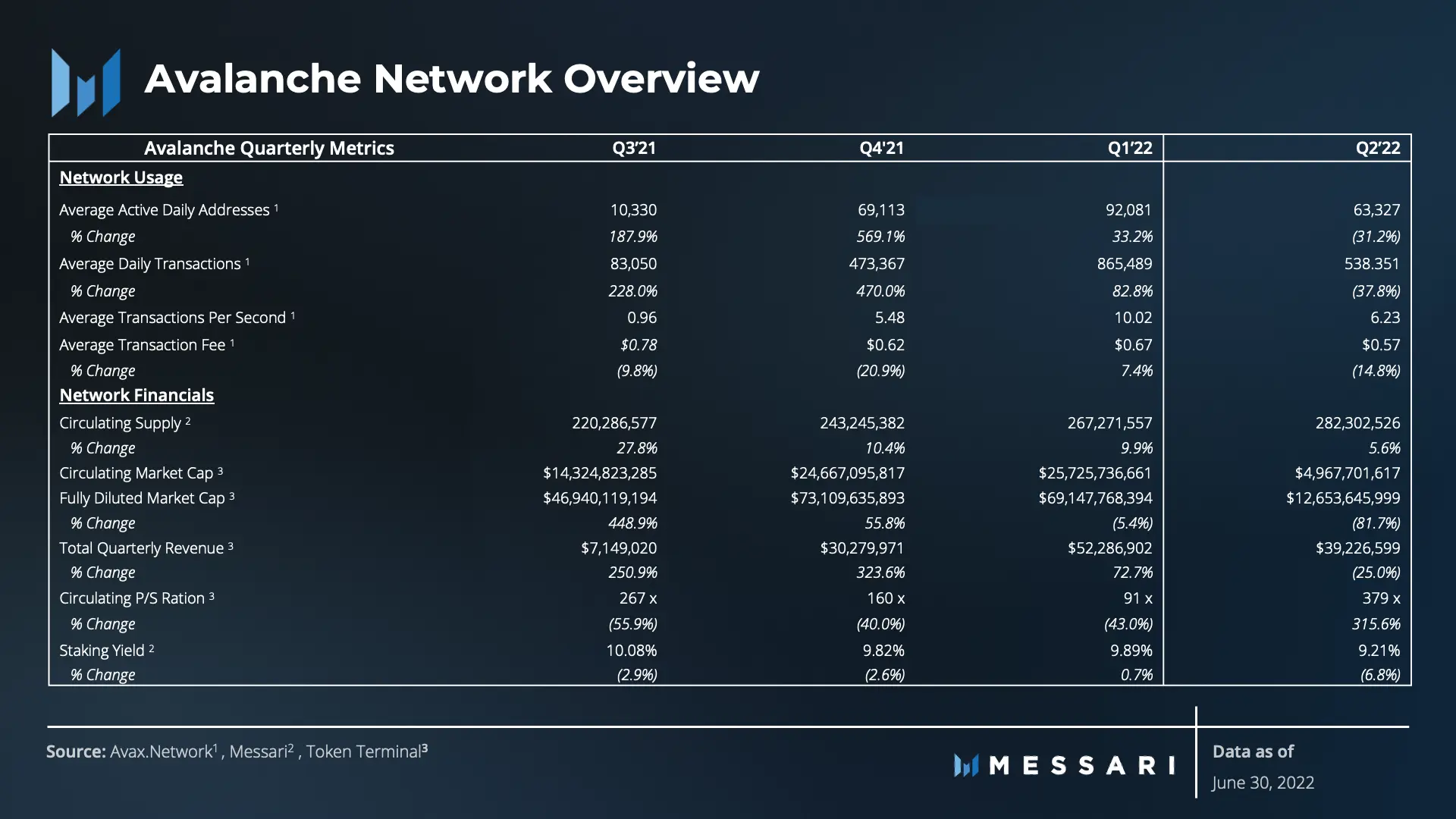
Compared to the previous quarter, Avalanche's network usage and financial performance saw a comprehensive decline, marking the first time in over a year. Although the market cap plummeted (-81.7%), the network's usage and revenue did not experience a significant drop. Daily transaction volume decreased by one-third (-37.8%), total revenue fell by 25%, and the price-to-sales ratio (P/S) reversed, with the price-to-revenue ratio increasing from 91x to 379x.
Ecosystem and Development Overview
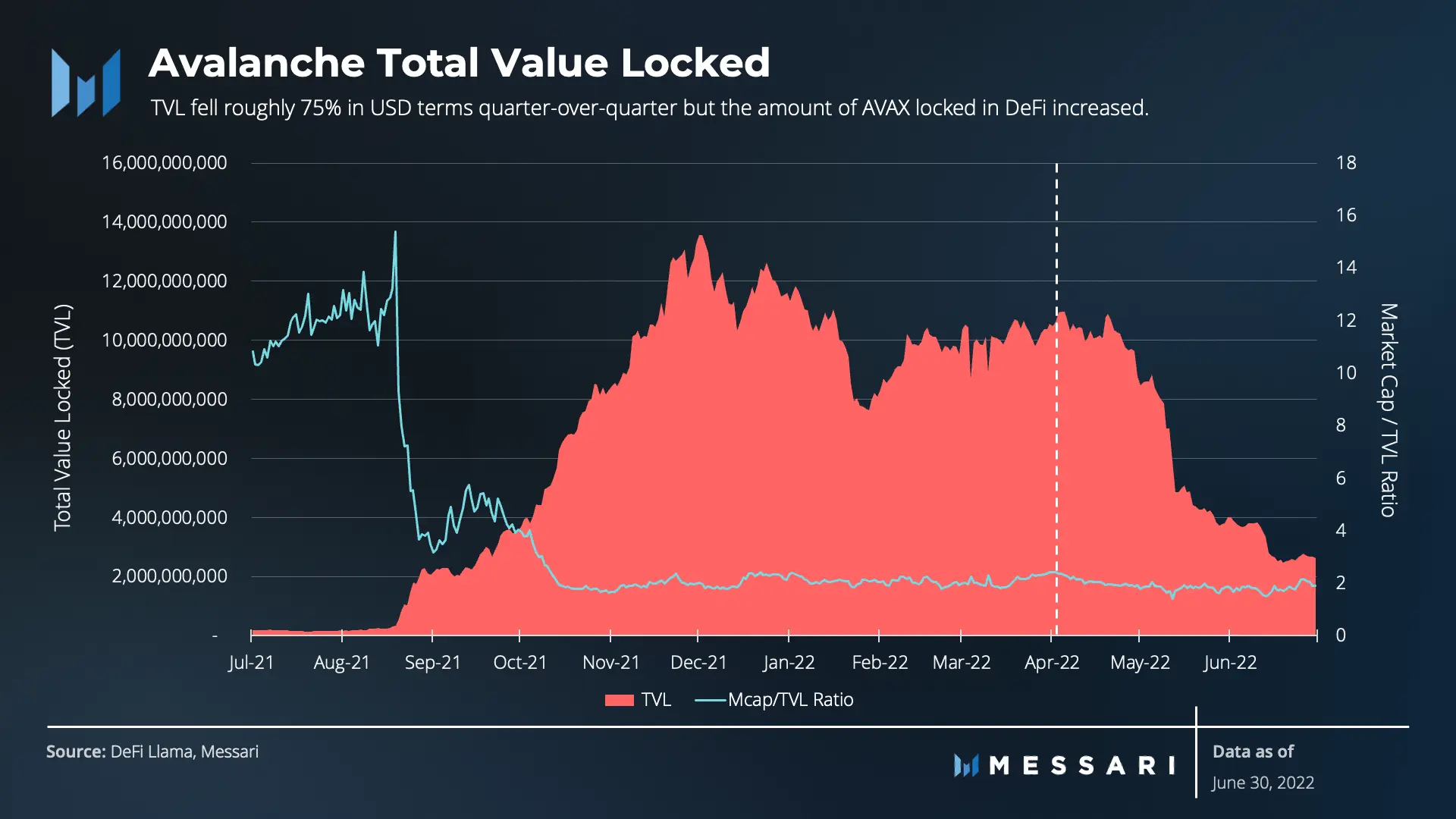
Despite ongoing incentive programs, Avalanche's TVL in USD terms decreased by approximately 75% quarter-over-quarter. While the USD TVL declined, the amount of AVAX locked in DeFi increased. The quarter began with approximately 115 million AVAX locked in DeFi and ended with about 152 million. From this perspective, the TVL and value are effectively captured, and the decline in USD-denominated TVL is merely a result of the drop in AVAX prices, not a decrease in utilization.
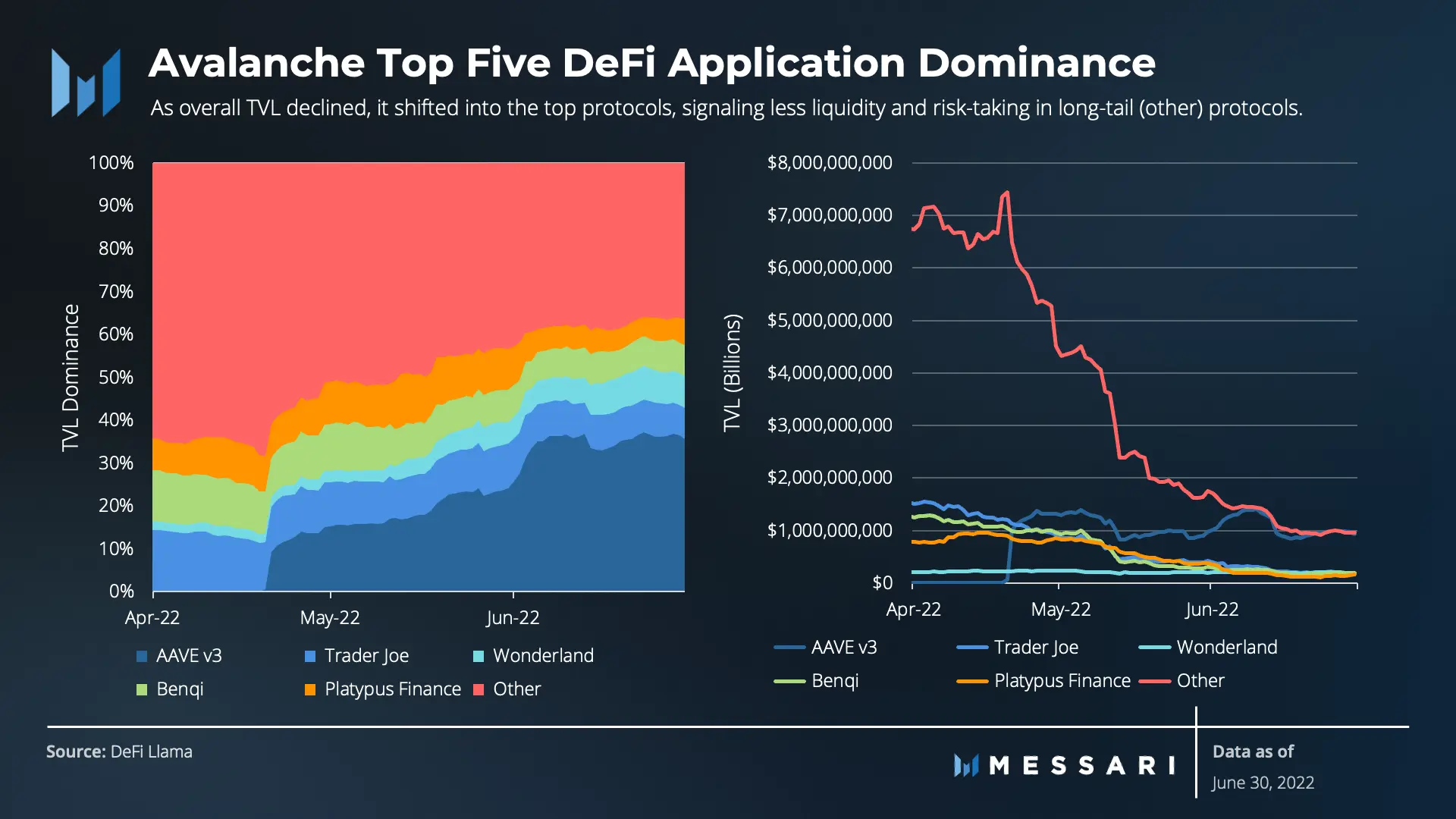
The TVL of two of the most prominent lending protocols in the Avalanche ecosystem, Aave and Benqi, declined roughly in line with the overall Avalanche DeFi ecosystem (69.3% and 76.7%, respectively). Meanwhile, the multi-chain DEX Trader Joe saw an even larger drop (87.9%). Interestingly, the overall decline in TVL shifted towards the top protocols, indicating a reduction in risk-taking through liquidity staking in long-tail (smaller) protocols. The Olympus DAO fork Wonderland saw only a 28.3% decline in TVL.
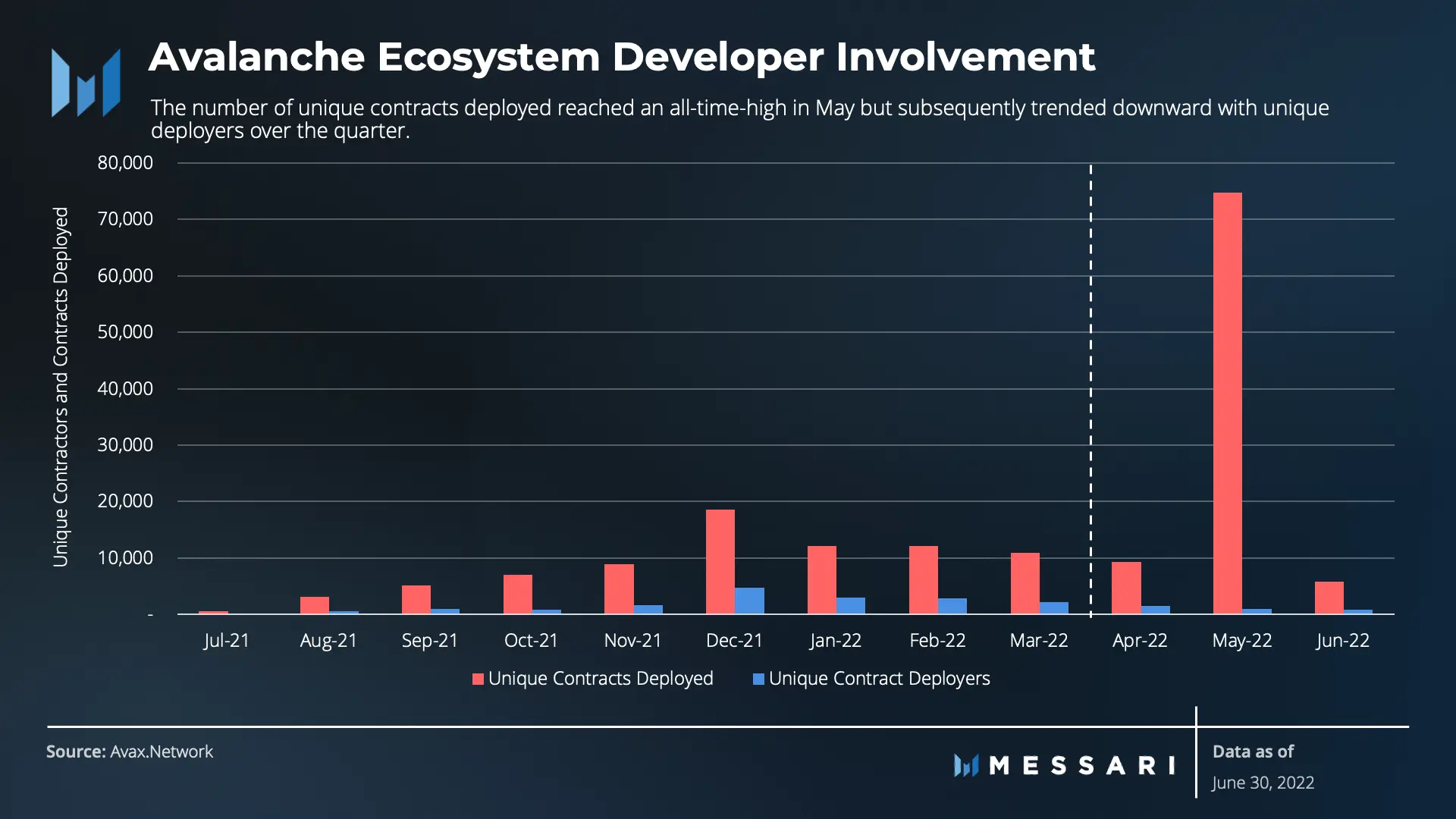
Developer activity surged significantly in May, with the total number of deployed independent contracts increasing by 154.7% in this quarter. The productivity of Avalanche network developers was also among the highest in any quarter, with activity (measured by new GitHub events) growing by 76.4%.
Staking and Decentralization
As a PoS network, Avalanche requires users to lock its native tokens and participate in validation duties to ensure security. A distributed network of validators and active participants helps ensure the network operates as intended.

Despite recent market volatility, the network's staking and decentralization remain robust. The average stake amount increased by up to 16% quarter-over-quarter. The validator equity has consistently been 6.50 times the amount of delegated equity. The amount of unresponsive validator equity also significantly decreased (down 40.7%), indicating higher participation, reliability, and network health.
Competitive Analysis
We assess Avalanche's key metrics by comparing it with the top five EVM-compatible chains (including Avalanche) that have the highest TVL and transaction volume.

The second quarter was a downturn period for the crypto market, with total TVL dropping from $228 billion to $75 billion, a 67% decrease in USD terms. Avalanche's TVL saw the largest decline among top EVM chains (-75%), except for Fantom. A significant portion of Avalanche's TVL decline may stem from the collapse of terraUSD. As mentioned earlier, the decline in TVL is typically assessed in USD. Therefore, the decrease in asset value represents a change in price relative to the actual utilization of DeFi. Ultimately, while USD TVL declined, the amount of AVAX locked in DeFi increased.
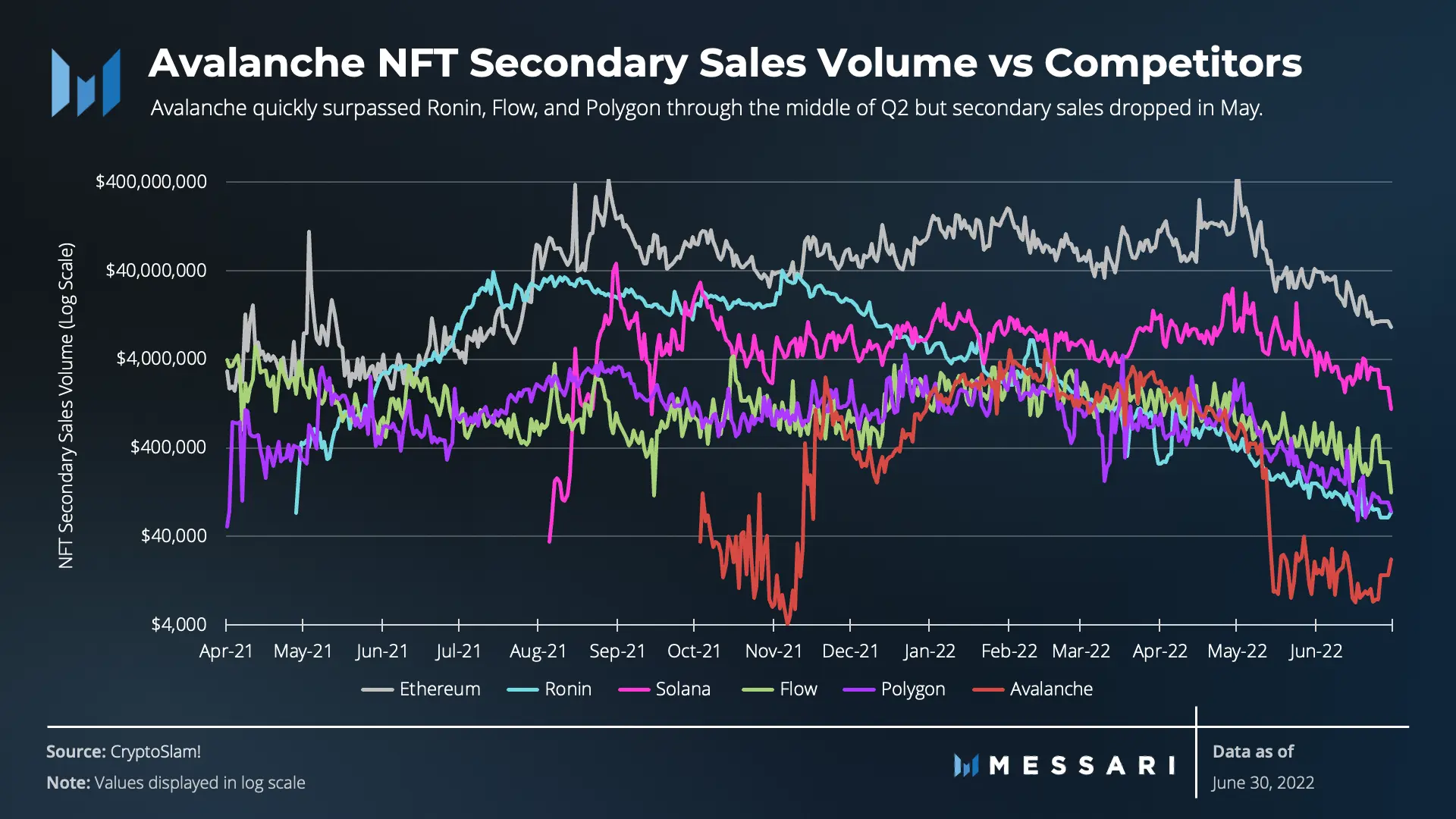
Avalanche's secondary NFT sales surpassed those of Ronin, Flow, and Polygon in the first quarter and early second quarter. However, there was a decline in secondary sales in May around the launch of the Swimmer network subnet. Nevertheless, Avalanche managed to enter the top 10 historical sales in a short time.










